Last updated: June 30, 2025
Growing up around Louisiana racetracks, I’ve always been drawn to bay horses—their deep, rich brown coats and black points stood out in the starting gate. With 25+ years in horse racing, I’m excited to share everything I’ve learned about these stunning animals. Let’s dive into what makes a bay horse so special, from their genetics to their racing legacy.
A bay horse is a horse with a reddish-brown body and black mane, tail, and lower legs (“points”), caused by the interaction of the Extension (E) and Agouti (A) genes. For a visual, check out our Horse Colors Chart, which includes a bay swatch.
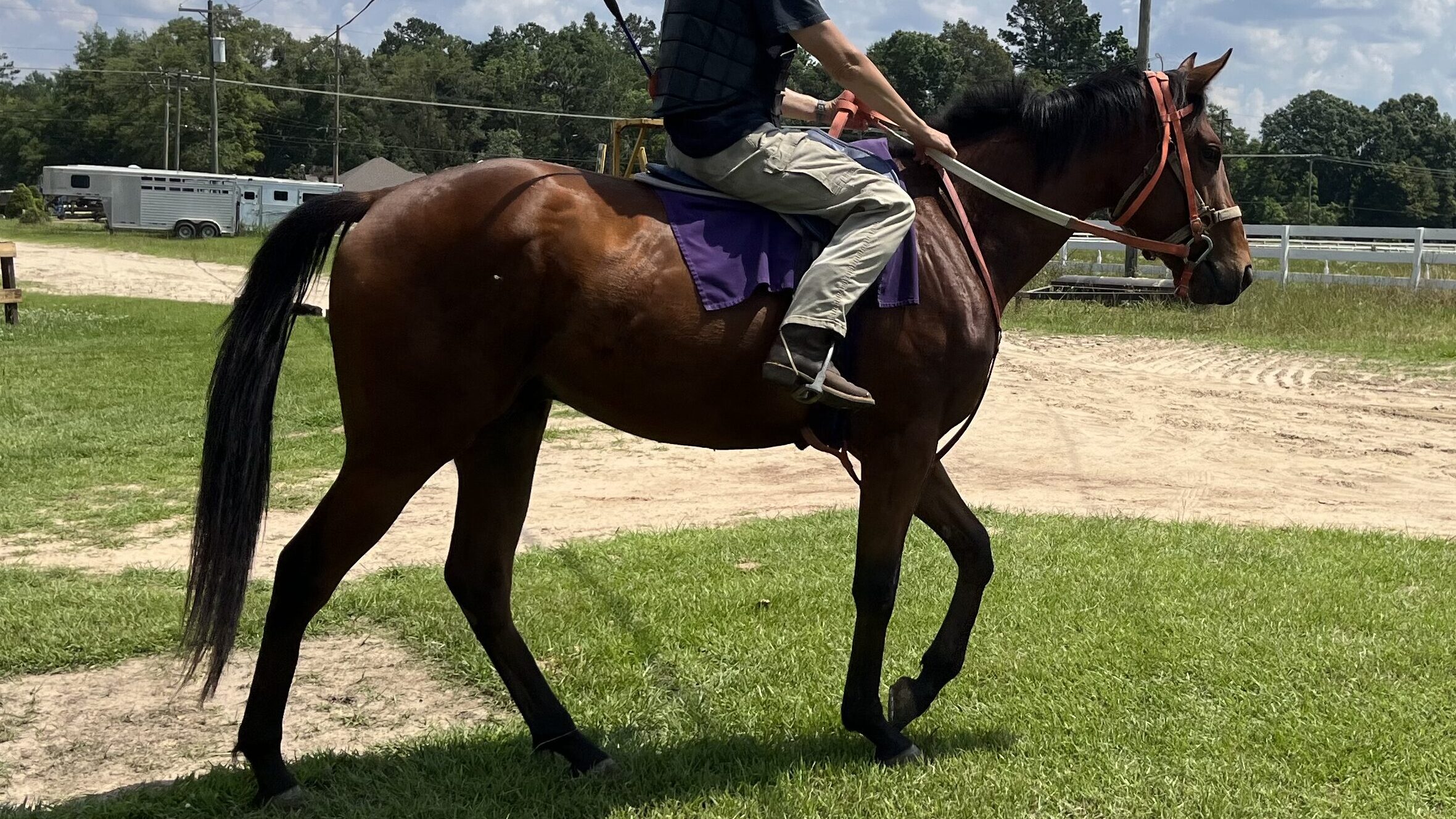
What Is a Bay Horse?
A bay horse is easily recognized by its rich reddish-brown body color paired with a black mane, tail, ear tips, and lower legs—these black areas are called “points.” This striking contrast sets bays apart from chestnut horses, which lack black points, and from brown horses, which have a more uniform dark coat.
Bay Horse Genetics and Inheritance
The bay coat color in horses results from the interaction of two key genes: Extension (MC1R) and Agouti (ASIP).
- The Extension gene controls a horse’s ability to produce black pigment. Horses with at least one dominant E allele (E/E or E/e) can produce black pigment. Horses with two recessive e alleles (e/e) cannot, and will be chestnut regardless of other genes.
- The Agouti gene determines where black pigment appears. If a horse carries at least one dominant A allele (A/A or A/a), the black pigment is restricted to the mane, tail, ear tips, and lower legs—creating the bay pattern. Horses with two recessive a alleles (a/a) will express black pigment all over the body, resulting in a black horse.
For more details, see the UC Davis Veterinary Genetics Laboratory, or Equine Genetics Research Centre.
A simple Punnett square illustrates how bay is inherited:

Legend:
Bay (E⁺ A⁺): Black points on a reddish-brown body
Black (E⁺ aa): Solid black coat
Chestnut (ee): No black pigment, reddish coat regardless of Agouti status
Note: The presence of ‘ee’ overrides Agouti effects, resulting in a chestnut coat color.

Bay Foal Color Calculator
Will My Foal Be Bay?
Instructions: Select the Extension (E/e) and Agouti (A/a) genotypes for each parent.
Bay requires at least one E and one A.
For more guidance, check out this excellent overview from the University of Kentucky: Equine Coat Color Genetics 101, or check out the International Museum of the Horse for more on equine genetics history.
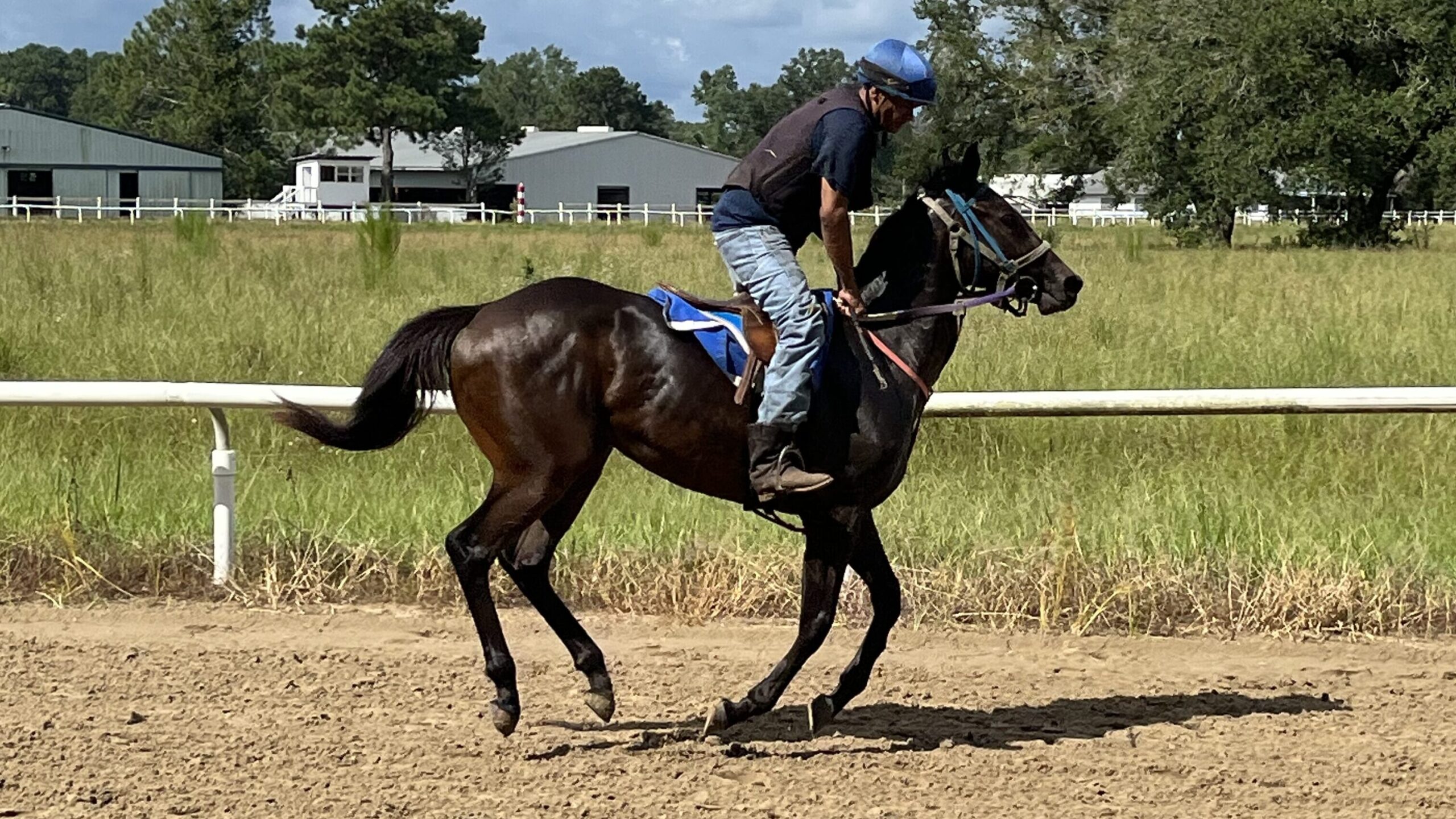
Bay Horse Shades and Variations
Bay horses come in a variety of shades, each with unique traits:
- Classic Bay: The standard deep rich brown with black points, often seen in Thoroughbreds.
- Blood Bay: A rare, brighter red-mahogany shade that shines in certain lighting, prized for its intensity.
- Mahogany Bay: The deepest reddish-brown, common in racing Thoroughbreds and Warmbloods.
- Wild Bay: Lighter points on the legs, often mistaken for buckskin, but retains black mane and tail.
- Golden/Light Bay: A tan-like shade, sometimes due to cream dilution, often confused with buckskin.
- Copper Bay: An orange-red hue with deep black points, vibrant in sunlight.
I saw a mahogany bay Thoroughbred at Evangeline Downs—it looked black until the sun hit its coat, revealing a rich brown glow that turned heads. Identifying these shades takes practice; check the points under natural light to confirm the bay classification.

Rare Bay Variations
Some bay horses exhibit rare patterns due to additional genetic traits. Here’s how to spot them:
- Bay Dun: A bay base with dun dilution, adding a dorsal stripe, leg barring, and a slightly faded coat. Look for the stripe along the spine to distinguish it from a classic bay.
- Bay Pinto: A bay coat with large white patches (Tobiano or Overo patterns). The white patches contrast sharply with the bay’s reddish-brown body and black points.
- Silver Bay: A bay base with the silver dapple gene, diluting black points to a silvery-gray while the body remains reddish-brown. Check for the silvery mane and tail to tell it apart.
- Roan Bay: A bay coat with roan, mixing white hairs evenly across the body but leaving the head and points solid. Unlike a classic bay, roan bays have a frosted appearance on their torso.
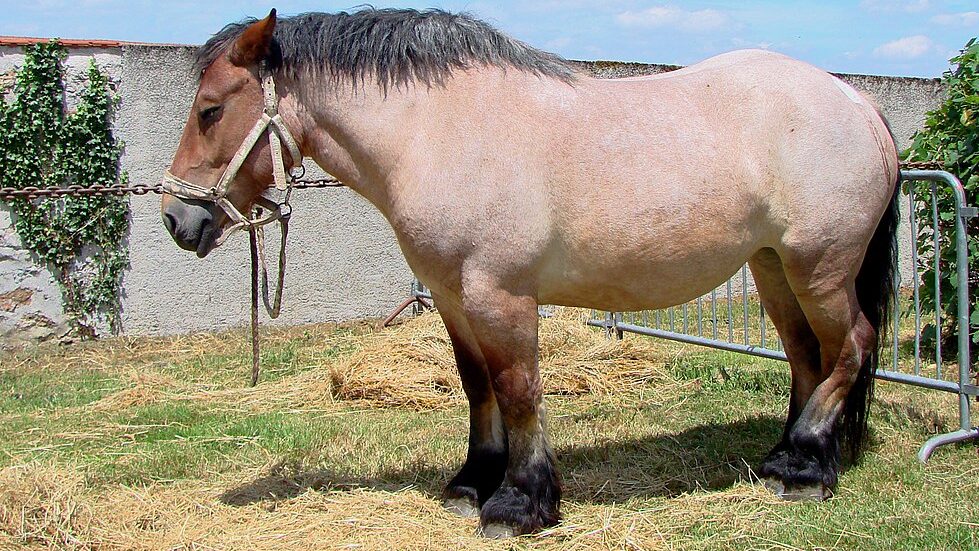
How to Identify a Bay Horse by Coat Color
Here’s a quick checklist for spotting a bay horse:
- Body Color: Deep, rich brown, ranging from copper to mahogany.
- Black Points: Solid black mane, tail, and lower legs—chestnuts lack this.
- Lighting Tip: Blood bays may appear darker in dim light; check in sunlight.
During a claiming race in New Orleans, I learned to spot bays by their black points—it helped me pick a winner whose lineage traced back to a bay champion. In racing, this skill can hint at Thoroughbred heritage, as bays dominate the breed.
If you’re curious about how to tell bays from other coat colors and understand the genetic differences, you can explore our full guide comparing bay and chestnut horses: Bay and Chestnut Horses: What’s the Difference?.
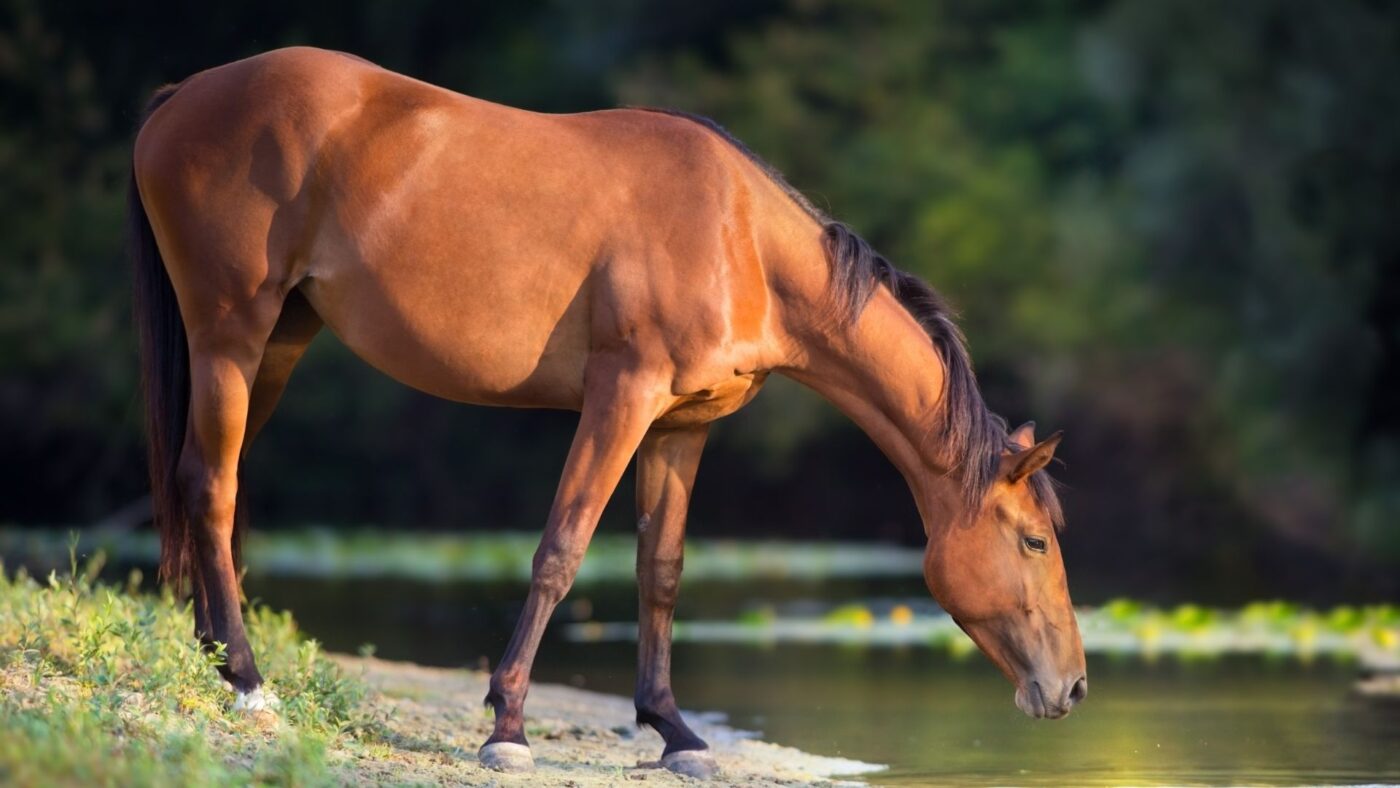
Bay vs. Other Horse Colors
| Color | Body Color | Points | Genetics |
| Bay | Deep rich brown | Black | E+ A+ |
| Chestnut | Deep reddish | None | ee |
| Black | Solid black | Black | E+ aa |
| Brown | Dark, near-black | Mixed | Often E+ aa with modifiers |
Not sure about other colors? Explore our complete guide comparing bay and chestnut horses: Bay and Chestnut Horses: What’s the Difference?
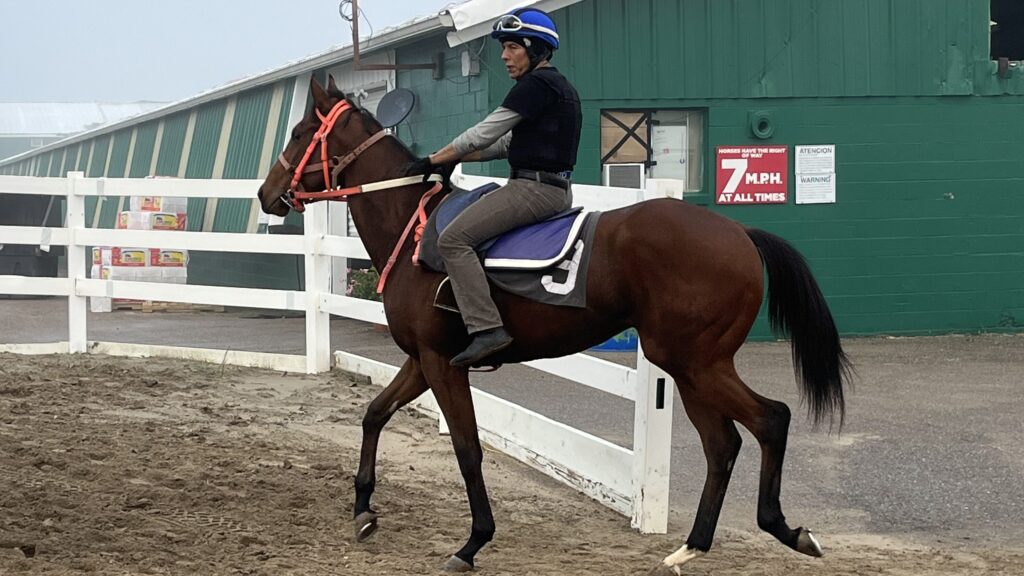
Bay Horses Across Breeds
Bay coloring appears in many breeds, but not all. Here’s a breakdown:
Breeds That Cannot Be Bay
Some breeds lack the genetic diversity for bay coloring:
- Haflinger: Always chestnut with a flaxen mane and tail, due to a lack of the Agouti gene variation for bay.
- Suffolk Punch: Exclusively chestnut, a breed standard since its origins, with no bay genetics present.
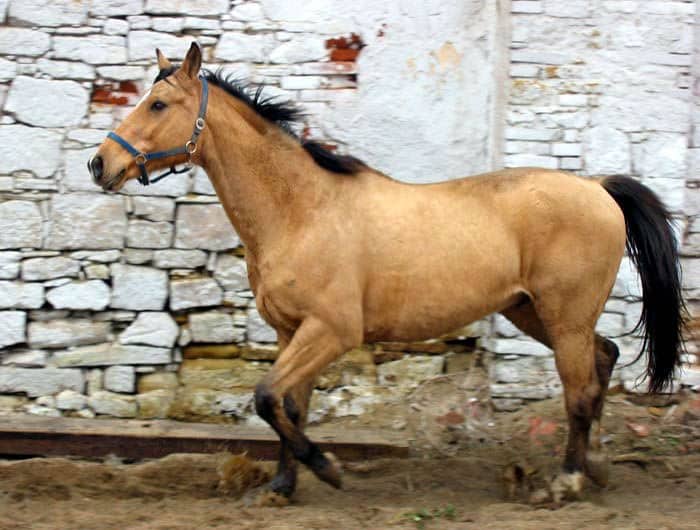
Breeds That Can Be Bay
- Thoroughbreds: Often classic or mahogany bay, prized in racing for their speed and fiery temperament. Many famous racehorses, like those in our Fastest Racehorses Guide, are bays.
- Clydesdales: Frequently golden or light bay, known as “gentle giants” with a calm demeanor, often used in draft work and parades.
- Arabians: Copper bay is common, adding elegance to their refined build. Their spirited yet intelligent nature makes them ideal for endurance riding.
- Warmbloods: Mahogany bay is especially prized, reflecting their robust stature. These horses are versatile, excelling in dressage and show jumping with a balanced temperament.
- Quarter Horses: Often wild bay, suited for their versatility in ranch work and sprint racing, with a steady and trainable disposition.
For more breed-specific traits, check out the American Quarter Horse Association.
Historical & Cultural Significance
Bay horses have galloped through history and culture. In medieval folklore, they symbolized strength and reliability, often depicted in art as warhorses. The Metropolitan Museum of Art features a 16th-century tapestry with a bay horse, showcasing its timeless appeal. In modern culture, bays remain a staple in racing and film, their striking coats capturing attention.
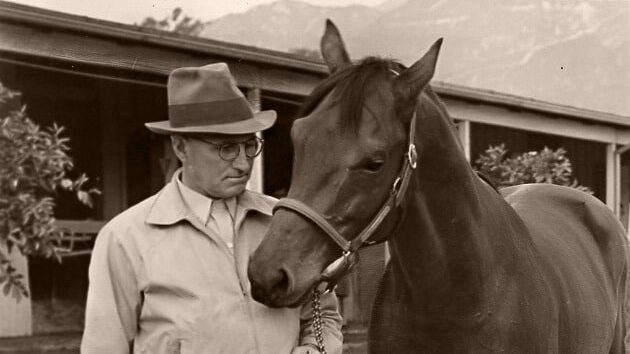
Famous Bay Horses
Bay horses have dominated racetracks for centuries:
- Man o’ War: This bay Thoroughbred won 20 of 21 races in the 1920s, his reddish-brown coat a symbol of invincibility.
- Citation: The 1948 Triple Crown winner, Citation’s classic bay coat shone during his 16 consecutive victories.
- Seabiscuit: A bay icon of the Great Depression, Seabiscuit’s underdog story and rich brown coat inspired a nation.
- American Pharoah: The 2015 Triple Crown champion, this bay ended a 37-year drought with his speed and iconic look.
As noted by the Jockey Club, bay Thoroughbreds continue to dominate racing. Discover more racing legends in our Greatest Racehorses of All-Time Article.
How Much Do Bay Horses Cost?
The color of a bay horse doesn’t directly affect its price—factors like breed, training, and pedigree do. A bay Quarter Horse for casual riding might cost $2,000–$5,000, while a well-trained bay Thoroughbred with a racing pedigree, like those descended from American Pharoah, can range from $10,000 to $100,000 or more. Additional expenses (boarding, vet care, farrier services) can add $3,000–$10,000 annually, depending on your location and the horse’s needs.
How to Photograph a Bay Horse for Best Color
To capture a bay horse’s true color, use natural daylight—early morning or late afternoon works best. Avoid harsh shadows; a grassy field background highlights their reddish-brown coat. I photographed a copper bay at sunset, and the golden light made its coat glow like fire—a trick I’ve used ever since.
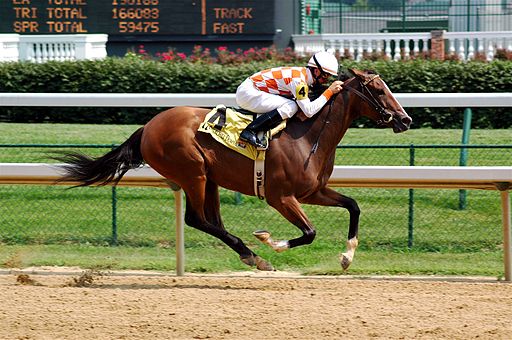
Frequently Asked Questions About Bay Horses
Have questions about bay horses? Here are answers to some of the most common ones:
What is a bay horse?
A bay horse has a deep rich brown coat with black mane, tail, and lower legs (points), resulting from the E+ A+ genetic combination.
How can you tell if a horse is bay?
Look for a reddish-brown body with black points to determine if a horse is a bay. Unlike chestnuts, bays always have black manes and tails.
Can Bay Horses Be Born a Different Color and Change to Bay?
Bay foals are often born with a lighter coat that darkens as they mature. It’s not uncommon for a bay foal to appear chestnut or dun at birth before developing the typical bay coloration as it grows.
What’s the difference between bay and brown horses?
Bay horses have a reddish-brown body with distinct black points, while brown horses (often seal brown) are darker, with less contrast in their points.
What are some famous bay racehorses?
Notable bay racehorses include Man o’ War, Citation (1948 Triple Crown winner), Seabiscuit, and American Pharoah, all known for their speed and iconic bay coats.
What are some good names for a bay horse?
Choose a name for a bay horse that reflects their personality, appearance, or heritage. Names like Copper, Sienna, or Blaze evoke their rich coat, while Monarch or Noble suit a regal presence.
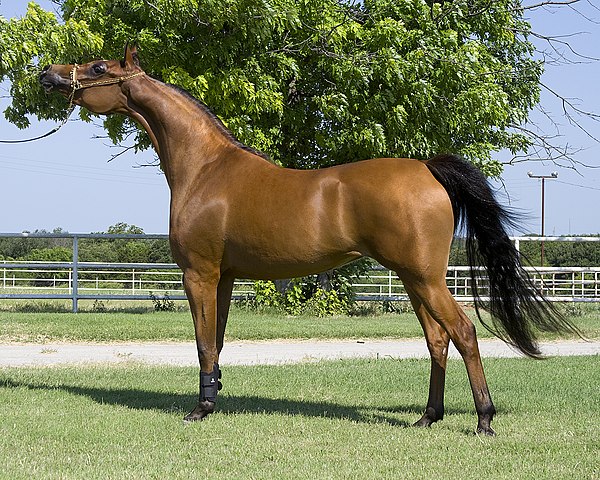
Downloadable Resources & Poll
Download our free “Horse Coat Color Chart”, featuring the bay swatch, genetic code, and comparisons. Download Now.
Vote in our poll: What’s your favorite bay horse variation?
References
- UC Davis Veterinary Genetics Laboratory – Horse Coat Color Genetics
Comprehensive overview of the genetic mechanisms controlling bay, black, and chestnut coat colors, including the MC1R (Extension) and Agouti (ASIP) genes124. - UC Davis Veterinary Genetics Laboratory – Agouti (Bay/Black) Test
Details on the agouti gene’s role in differentiating bay and black horses and genetic testing for breeders. - UC Davis Veterinary Genetics Laboratory – Red Factor (Extension) Test
Information on the Extension gene, which determines a horse’s ability to produce black pigment, and its relevance for bay coloring4. - University of Kentucky – Equine Coat Color Genetics 101
Educational resource explaining the genetics of bay, black, and chestnut horses, with practical breeding implications. - The Horse – How Your Horse Got His Color (And Why You Should Care)
Overview of horse color genetics, the Horse Genome Project, and why color genetics matters for breeders and owners. - American Quarter Horse Association – Color Genetics Overview
Registry resource on color genetics in Quarter Horses, including bay and related shades. - The Jockey Club – Thoroughbred Coat Color Genetics
Registry information on color genetics and registration standards for Thoroughbreds. - Black Diamond Equine Veterinary Clinic – Genetic Testing in Horses
Practical guide to genetic testing and its application for horse coat color prediction. - DVM360 – Researchers Discover “Graying Gene” in Horses
Recent research on genes affecting color changes and graying in horses. - The Metropolitan Museum of Art – Equestrian Art Collection
Museum collection featuring historical and artistic depictions of bay horses and equestrian culture. - British Library – The Bay Horse in Folklore
(If referenced in your article) A resource on bay horses’ cultural and mythological significance in British and European folklore.

Conclusion: Celebrate the Timeless Beauty of Bay Horses
Reflecting on my years at Louisiana racetracks, I recall a bay colt I bet on at Fair Grounds—he won by a nose, teaching me the thrill of their grit. Bay horses hold a special place in the equestrian world, captivating us with their rich, warm coats and striking black points. From their deep historical significance as loyal warhorses and symbols of prosperity to their modern roles in competitive sports and everyday riding, bay horses embody strength, elegance, and versatility.
Understanding their genetics, diverse shades, and cultural legacy deepens our appreciation for these remarkable animals. Bay horses bring timeless elegance and an enduring spirit, forging deep connections with equestrians and horse lovers across generations. They are more than their genetics or coat shades; they are living symbols of the equestrian spirit—a spirit marked by resilience, passion, and the pursuit of beauty.
Want to Learn More?
Dive deeper into the fascinating world of horse colors and care:
- 12 Common Horse Coat Colors Explained
- Tips for Achieving a Shiny, Healthy Horse Coat
- The Equine Dilution Gene
Share Your Story:
Do you own a bay horse or have a favorite memory involving one? Share your experiences and photos in the comments below! Whether it’s a cherished trail partner, a show-ring champion, or a spirited companion, we’d love to celebrate their unique charm together.
Stay connected for more insights on horse care, history, and genetics by subscribing to our updates. Let’s keep exploring the incredible world of horses—one story at a time.

About the Author: Miles Henry
Lifelong Horseman | Racehorse Owner | Published Author
Miles Henry brings over 25 years of hands-on experience training and owning Thoroughbred racehorses. Raised with Quarter Horses and Appaloosas, he’s spent a lifetime learning from horses—on the track, in the barn, and in the field. Today, he runs a small but successful racing stable in Louisiana and shares real-world insights on HorseRacingSense.com, helping horse owners, fans, and bettors navigate the sport with confidence.
📚 Books: View Miles’s books on Amazon »
🎧 Podcast Guest: Animal Tales Ep. 32 |
YouTube Interview
📩 Newsletter: Sign up for racing tips and horse care advice »
🔗 Follow Miles:
Twitter |
Facebook |
YouTube

